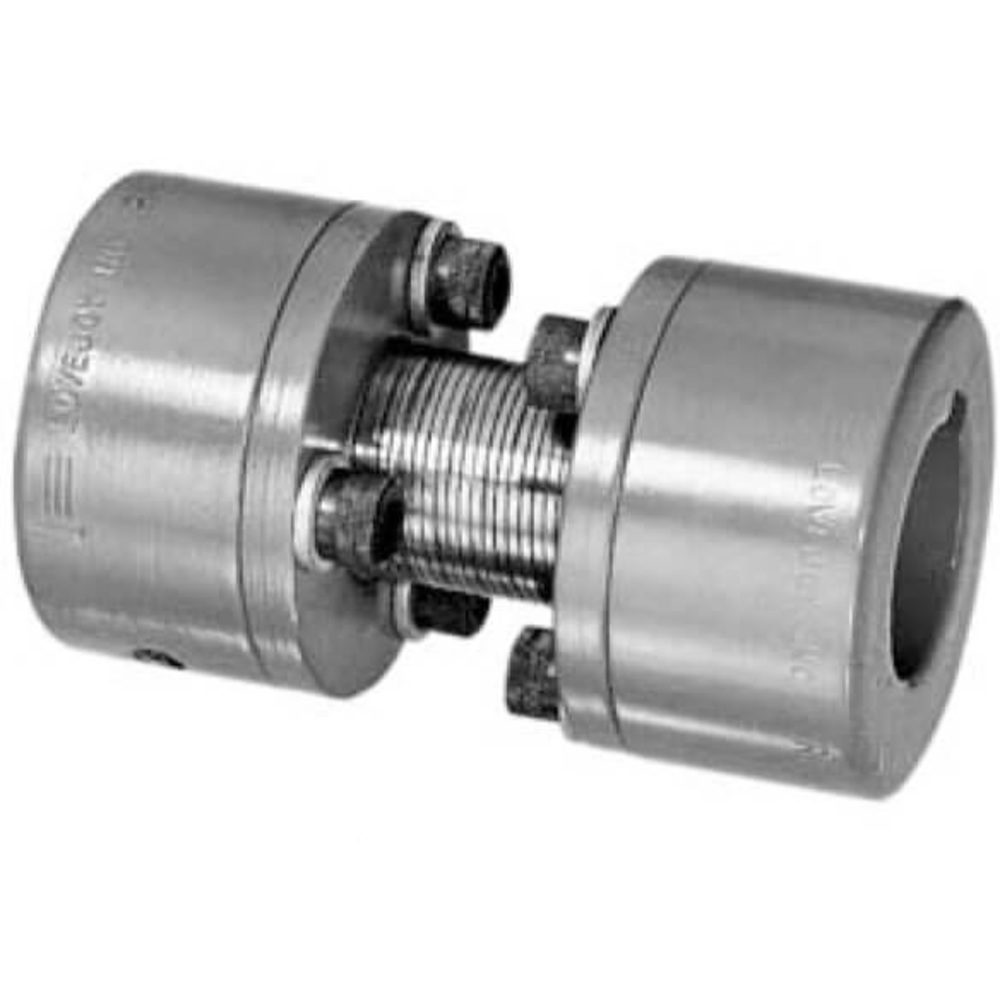TB Woods Form-Flex Couplings
:
- They help transmit torque while compensating for angular, axial and parallel misalignment between two connected shafts.
- These spacer couplings allow enough space for installation and maintenance without moving the connected machinery.
- They feature a metal disc that uses a double hinge effect through two flexible discs and a spacer, causing both shafts to rotate at the same speed.
- If the shafts are misaligned, the flexible element deflects and absorbs the displacement, reducing the transmission of vibration and shock between the two shafts.
Lovejoy U-Type Couplings
:
- These Uniflex couplings are used in a variety of applications, including high misalignment, space limitations, high temperature and exceptionally low backlash or windup conditions.
- They feature a flexible triple-wound spring design that helps transmit torque between two rotating shafts while accommodating vibrations.
- These compact couplings contain two hubs that are brazed to the speed spring pack to create a durable one-piece flexible coupling.
- They are supplied with keyways and set screws for offering a secure and accurate connection between the coupling and the shafts.
- These short-version couplings can accommodate different length requirements and provide a maximum OAL (overall length) tolerance of 1/8 inches.
- They are ideal for applications like textile equipment, robotic / positioning, conveyors, carton folding and glueing equipment, machine tools, blowers and the steering mechanism.
 £ GBPChange Country
£ GBPChange Country
